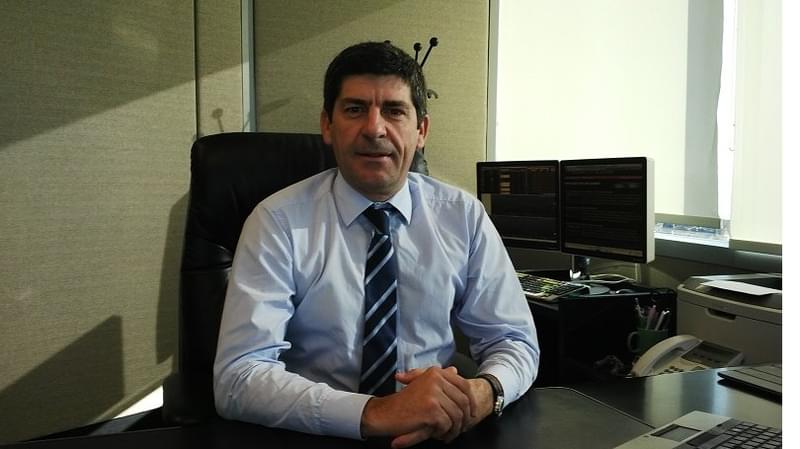Q. You’ve had the privilege of working within the telecoms sectors of two very different, dynamic countries – Brazil and Argentina. Can you give us a sense of the outlook for the sector in both countries? What are some of the most influential factors in play in both cases?
A. Brazil and Argentina are both dynamic and different countries, but at the same time they share many similarities, particularly when talking about regulation and some of the pressures facing the sector. The telecommunications industry is always highly correlated with economic cycles, and that’s fairly consistent throughout the region. When we look at both countries we see GDP projections are showing growth rates of between 2% and 4% for next year, after several years of recession, so the outlook on the sector is at least slightly positive. At the same time, capital intensity will probably remain high, since both countries have infrastructure deficits – not just in telecommunications and logistics. The main concerns, which are largely consistent in both contexts, is taxation; both countries have large fiscal deficits, and the different governments are putting a lot of pressure on operators, especially for mobile services. In both countries, turnover taxes are quite high, particularly from the states in the case of Brazil, and the provinces in the case of Argentina. Overall, and despite some of the pressure on revenues, I’m upbeat about the growth opportunities in both countries.
Q. Brazil is the largest telecoms market in South America, contributing close to 4% of the country’s GDP according to some estimates. What are some of the main strategic initiatives in place for TIM Brasil and the company’s funding team this year?
A. TIM is today the second largest mobile operator in Brazil, and has been under a strong turnaround since the beginning of last year; until then, the company was focused mainly on the prepaid sector, and was typically perceived as a “budget” provider. Now the company is focused on a “more for more” concept, with strong results in the last few quarters – driven in part by strong growth in our postpaid customer base. This clear and focused market strategy a great sense of efficiency – both in Opex and Capex – and allowed us to significantly increase the operating free cash flow, reducing our need for new funding. That said, the company has a fairly low level of leverage, about 0.5xEBITDA, and almost all of the debt in local currency with the Brazilian development bank, BNDES; the average interest rates paid on our debt are below the market benchmarks.
Q. Argentina seems to be making progress on the macro stabilization front, but there is still lots of room for growth – and the telecoms sector seems to be one of the main beneficiaries so far, with telco stock valuations – and to an extent bond performance – outpacing those of most of its Latin America peers. Does TIM see any potential opportunities to expand into the market?
A. Argentina is in the midst of a significant turnaround, both in political and economic terms; indeed, the country’s institutions are stronger and the government is very market-oriented, in stark contrast to just a few years ago. While there is still a lot of work to do, and with a high level of inflation still persisting, expectations of economic improvement are rising. This, together with imminent consolidation in the market due to the recently announced merger of two of the main operators, is driving telco valuations above the region’s peers.
TIM’s stock, meanwhile, has become a success story in itself, growing more than 50% year to date in US dollar terms, not only because of the stabilization in the Brazilian economy, but because of consistent positive results over the last few quarters. The sustained improvement in our positioning and fundamentals, together with an expected recovery of the economy –even if slightly – could bring further expansion opportunities for TIM.
Q. Last year, liquidity at Brazilian banks was less than adequate for many of the country’s domestic, reais-driven companies – even some of the larger companies. With fundamentals slowly improving, and some of the political volatility out of the way, have the country’s banks become less risk-averse?
A. Political and economic turmoil, with some of the country’s largest companies facing a raft of problems, has been a significant challenge. Couple this with growing levels of bad debt on the consumer side, and a significant concentration of financial institutions in general, access to local currency liquidity continues to be constrained. But with recent signs of economic recovery, together with structural reforms such as the new labour framework already approved, and the proposed social security reforms under discussion – reforms that aren’t yet up for discussion in Argentina – should lead Brazil’s banks to become less risk-averse and more open. At the same time, BNDES already announced that it will be increasing its lines of credit for both large organizations and SMEs, which should come as welcome news to the country’s borrowers.
Q. We’ve been following the Oi court case for some time now. Has it had an impact on investment attitudes towards telcos in the region? Has it made it more difficult to raise new capital?
A. Of course, it’s not an easy issue. But I think that the market is well aware that this is really a unique, specific situation that is not extendable to other operators, since Oi’s problems were not originated by its market performance. That said, I don’t think the court case has had a negative impact on other operators’ ability to secure new funding. In fact, we are currently in discussions with a number of lenders offering very attractively priced funding, so it doesn’t seem to have created industry-wide constraints.









